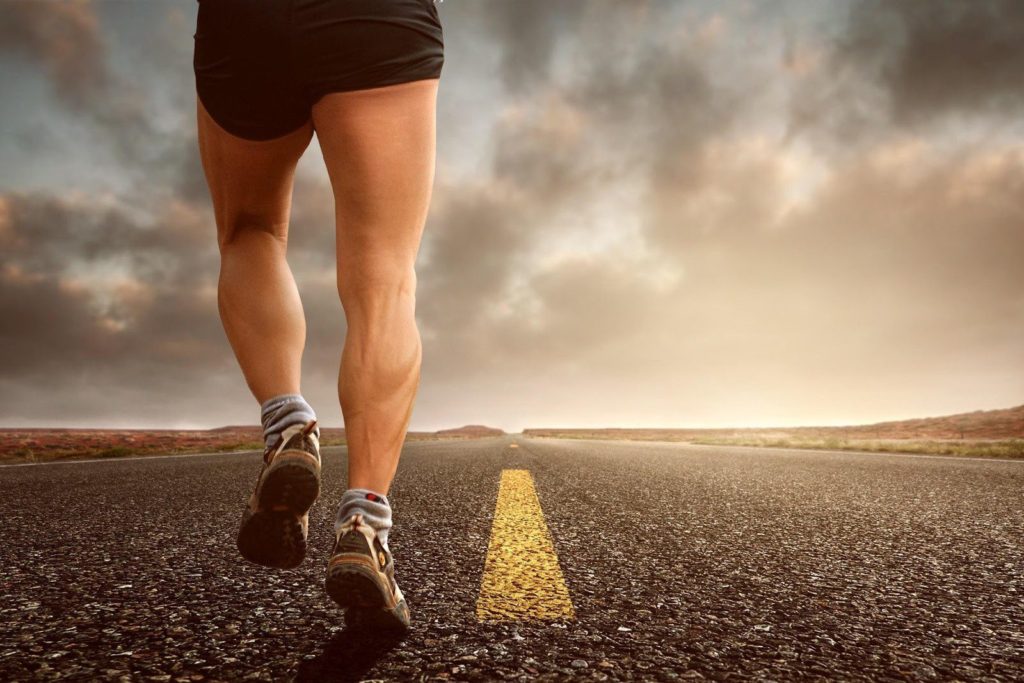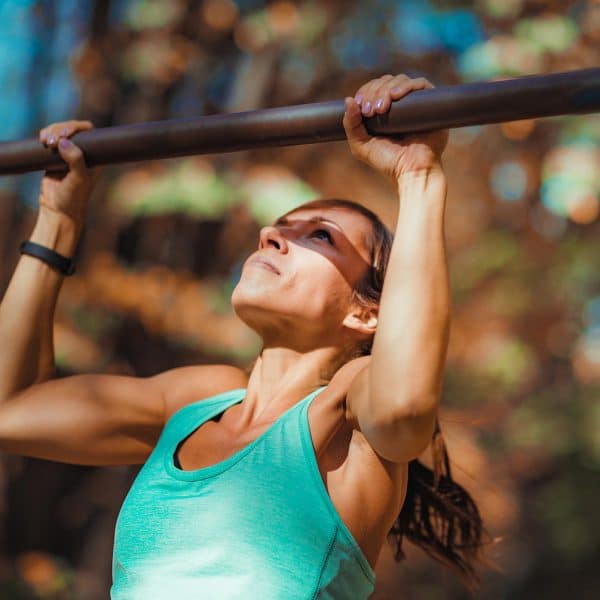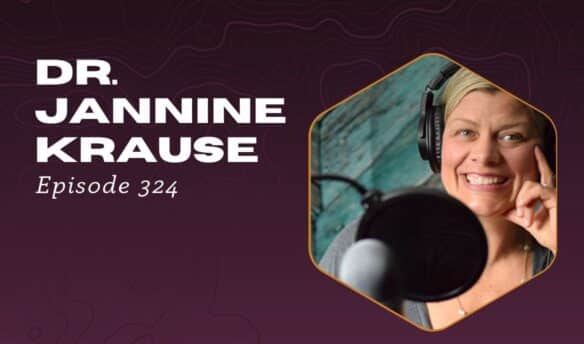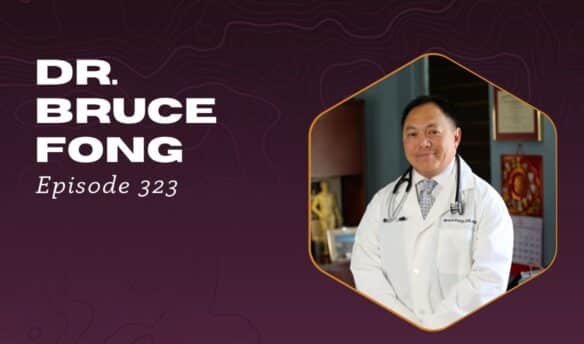Tight muscles in the front of your hips combined with weak gluteal muscles is directly linked to chronic back pain.
Chances are you’ve spent a long period of time sitting and then when you stood up your back gave out or perhaps your back hurts all the time when you run or after workouts.
Sometimes the intensity of your pain is so strong you can’t function and other times it’s a nagging pain that drives you crazy.
You’ve tried stretching, foam rolling, massage and maybe even chiropractic adjustments and nothing is working.
That’s because all of those will only yield temporary relief.
The root of the problem is that the muscles that allow you to sit and bend at your hip, the hip flexors, are too tight due to your sedentary lifestyle or exercise routines, such as running, that cause these muscles to become overdeveloped and extremely tight.
At the same time your butt muscles, aka gluteal muscles, are weak and the battle between the weak and strong muscles of your pelvis eventually causes your back muscles to tighten to stabilize your pelvis.
How do the hip flexor muscles cause back pain?
There is a huge connection between tight hip flexors and back pain.
The hip flexors contract when you sit, which is why we tend to have more back pain on long drives or when sitting at a desk.
The hip flexors pull your pelvis forward and if one hip flexor is tighter than the other it will pull one side of your pelvis forward, and the opposite posterior side of the pelvis can spasm, resulting in a twisted pelvis.
This is a common scenario which causes low back pain and sciatica.
Sedentary jobs that require you to sit for long periods of time can cause issues with your hip flexors becoming shorter and tighter while leaving your gluteal muscles weak.
If you have tight hip flexors, and spend the weekend doing physical activities, you might end up with pain because of the muscular imbalance created during your sedentary weekly habits.
Your main hip flexor muscle is actually two muscles in one known as the iliopsoas.
It originates at your 12th rib, joins with the 2nd muscle, the iliacus at the hip, and extends past the front of your hip to inside your groin.
Due to the location of this muscle it often pulls on the spine causing the low back muscles to tighten and often is associated with low back pain wrapping around to the hip or groin.
Unfortunately, most medical practitioners focus on the back and completely ignore the need to release hip flexor muscles while strengthening the glutes.
How Do You Know If You Have Weak Glutes?
Find out if you have weak glutes by testing the following:
- Can you squat without your knees leaning in?
- Do you need to use your back to swing yourself up from a squatting position?
- How low can you go? A proper squat entails your butt almost touching the ground.
- Can you lift yourself out of a squat? If your glutes are strong enough, you should be able to lift yourself out of a squat with the firing of gluteal muscles.
If you are having trouble with any of these, this is a sign of weak glutes.
Another sign is chronic pain around your lateral hip bone with spasms of your gluteal muscles.
The greater trochanter is the hip bone on the side of your hips.
Feel this area and make a note of any spots that are painful.
This area is where the attachment points of the gluteal muscles and the Iliotibial band, the tendon that stabilizes the legs, as it comes down your leg are other points on the body are located.
Pain in the lateral hip and leg region indicates weakness of your gluteal muscles.
The more you strengthen the gluteal muscles the less lateral hip, leg and lateral knee pain you will have.
Who gets this problem?
Desk jockeys, weekend warriors, weight lifters, teenagers that play a lot of video games, and runners are just a few of the folks who have this type of pain.
Men and women of any age can have these issues.
Low back pain is common in runners who do not maintain pelvic mobility and strength.
Foam rolling muscles to release muscle tension, stretching, lacrosse ball trigger point work, strengthening and balance work are necessary for every human that wants to be pain free.
Unfortunately, you weren’t provided with a “how to move” manual when you were born and so you picked up cues from watching others who also missed out on proper education.
This is why it is key to go back to basics and work on your pelvis muscles.
If you’re going to start running, you need to see a physical therapist or a trainer who is trained in functional movement assessment.
You need to know how you move, what weaknesses you have, and how to correct them so you can prevent issues in the long run.
How Do You Identify the Problem and Fix It?
It’s crucial to first see your medical provider to assess for a disc issue.
If you do not have a primary care provider a sports medicine or orthopedic specialist’s office is a good place to start.
Sometimes an xray or a MRI might be necessary to rule out more serious issues.
If your doctor suspects that your pain is muscular in nature or can be managed with physical therapy this is when you want to find a physical therapist or medical practitioner who is trained in functional movement assessment to determine your strengths and weakness.
I highly recommend Airrosti Rehab Centers – click HERE to see if there’s one near you.
The goal of Airrosti is to fix pain fast versus have you going to physical therapy appointments for weeks on end.
Airrosti techniques focuses on strengthening what’s weak in your body and releasing what’s tight preventing proper mobility.
Try the following exercises to strengthen your glutes:
- banded monster walks
- clam shells
- glute bridges
- chair squats
What Can You Do At Home to Relieve Pain?
Start with building a toolbox for yourself. Here are a few basic things I recommend:
- A gua sha tool- Gua sha is a jade tool that is used to scrape the tissue to break up adhesions. You can also use an Asian soup spoon to do this as well – use a plastic one not a ceramic, as they are more durable. Press in to trigger points and lightly rock back and forth. It will help break up adhesions, and it does a better job than a lacrosse ball in getting into deeper areas of pain located in tendons and ligaments.
- Foam roller- A foam roller is great for workout recovery as well as helping loosen up larger areas of tightness.
- Foam roll the front of your thighs (hip flexors)
- Foam roll the back of your thighs (hamstrings)
- Foam roll the sides of your thighs (IT bands)
- Foam roll either side of spine to address your lumbar muscles
- Lacrosse ball- This can be used to really dig into the trigger points and sore spots that you’ve noticed in your muscles. Keep in mind is that your pelvis works in conjunction with your knees, ankles, and feet. You have to work on keeping all of those joints moving properly to enhance mobility and reduce pain.
- Use a lacrosse ball on the following areas:
- bottom of your feet
- roll it on your calves
- sit on a wooden chair and put it under your legs to work on hamstring knots
- put it on your glutes and around your hip bones and lean into the wall to roll out hip and gluteal knots
Loosen up the pelvis every day:
- hip circles or hula hooping
- windshield wipers
Brianne Grogan is a physical therapist and founder of FemFusionFitness. She has videos on hip circles and exercises to loosen up the pelvic floor. She has helped many of my patients with get their pelvis to relax, in turn relieving their back pain.
Strengthen and Mobilize Your Pelvis to Be Pain Free
By determining what muscles are tight, where your trigger points lie, what and what muscle weaknesses you have you will be on your way to being pain free in no time.
If you have had any injuries to your feet, ankles, or knees, you’re going to have pelvis issues so don’t forget to work on these joints too.
While it sounds like a lot of work, getting your muscles moving better, releasing knots and breaking up adhesions, will have you feeling so much better.
Remember, the pelvis supports your spine. If it’s not moving well it will prevent your spine from moving properly causing pain.
You can be pain free, you have to put in a little effort but it will be well worth it when you are moving freely and not missing out on life by being a slave to your pain.
If you enjoyed this blog post, I have a podcast dedicated to this subject as well! Click HERE to listen in.
youtube





